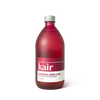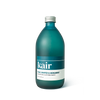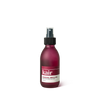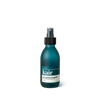How to wash white clothes
You can wear white clothes all year round, it’s true, but as winter is in full swing, there’s nothing quite like a snowflake-white ensemble to dazzle at festive drinks and parties. Though whites can be prone to discolouration, it’s easy to keep them looking bright and sparkly if you follow a few simple steps. And even if they’ve become dull, grey or slightly yellowed, you can restore the brightness with a few simple tips and tricks. Read on to discover how to clean and care for your whites, to keep them in prime condition all year round.
Step #1: Sort and separate
If you want bright, white clothes, sort before you launder. It goes without saying, but washing darks and lights together are a recipe for dingy whites. Washing white clothes separately will prevent colour bleeding and transfer from other coloured fabrics. We also recommend sorting your whites by type (for example, cotton, delicates, towels, bedding).
 Image source: Vladimir Gladkov
Image source: Vladimir Gladkov
Step #2: Don’t overload
If you want the cleanest results, avoid overloading the drum when washing your whites. It may be tempting, but filling to the brim will leave little space between your items for the water to rinse away the dirt and grime, redepositing it on the fabrics, and leaving them dull. So give your whites proper breathing-space and a full spin. We recommend half full.
Step #3: Avoid bleaching agents
Laundry products containing bleaching agents and optical brighteners (a common one is chlorine bleach) may promise to keep your whites white and brights bright. But they’re only a short-term fix, and can be detrimental not only to clothes, but also to sensitive skin and the environment (check out our post on why bleaching agents are bad). These chemical-stuffed detergents will blitz the life out of your white clothes, damaging the fibres and reacting to protein-induced stains, like sweat, making them appear yellower. Our gentle yet effective plant-based surfactants, by contrast, will safely Kair for your whites rather than play tricks on the eye, so that they can live on in full colour.
 Image Source: Maison Margiela
Image Source: Maison Margiela
Step #4: Don’t overdose
Excess detergent is not as easily broken down by the water in your machine, which can lead to build-up and residue on your whites. And worse - it could even cause grime to redeposit on your clothes - the very opposite of brighter clothes! So take our advice - stick to the recommended dose so that your whites stay spick-and-span.
Step #5: Speedy spot treat
There’s no hiding an untimely wine spill or muddy paw prints on whites - stains will show like paint on a blank canvas! The trick is to treat the stain as soon as possible, so that it doesn’t settle into the fabric’s fibres and cause long-term damage and discolouration. We recommend spot-treating the area over a full, water-wasting wash. Simply dilute a little of our Signature Clothing Wash in cool water and gently work it into the affected area using a clean cloth, then dab away the residue with another clean, wet cloth before leaving to dry.
 Image Source: Wino Noire
Image Source: Wino Noire
Step #6: Wash warm
When washing your whites, use the warmest water recommended for the fabric, to help remove oils and grime which can otherwise dull the fabric. Opt for a regular wash cycle, or a special cycle such as Heavy Duty or even Whitest Whites, depending on the severity of the staining and/or discoloration. But take care with your delicates - these always require a cool wash (no more than 30ºC, and a delicate or hand wash cycle). Check out our guide to washing machine cycles if you’re not sure, and always follow the instructions on the label.
Step #7: Rinse with vinegar
If you’re tackling particularly tough stains, or your whites are woefully dingy, try adding a cup of distilled white vinegar to the rinse cycle to brighten them naturally. It’s a good alternative to traditional chemical bleaches, which can otherwise leave unwanted residue.
Step #8: Air dry
We recommend drying your whites outside, if possible, as tumble drying can cause damage to the fibres. Direct sunlight is best for whites: ultraviolet rays are nature’s very own bleaching agent! Otherwise dry inside on a drying rack near a window or natural light source. Once dry, spritz with finishing spray, to release wrinkles and lock in scent.
 Image source: Megan Lee
Image source: Megan Lee
And to take the worry out of washing white clothes, we’ve put together our top tips...
Top tips for super white whites
TIP #1: Clean your washing machine regularly by running a hot service wash to make sure it isn’t discolouring your whites (see our article on how to use a washing machine).
TIP #2: If you live in a hard water area, consider investing in a water softening system, as the minerals in hard water can leave white fabrics looking dull and dingy.
TIP #3: To refresh yellowed whites, create a solution of distilled white vinegar and cool water in a large tub (1 cup : 1 cup), and soak your whites in it for a few hours or overnight.
TIP #4: Avoid ironing on a high heat (which can scorch white fabrics and leave marks), and opt for a lower temperature, using steam and water to help relax creases.
TIP #5: When storing your whites, avoid using plastic containers (which restrict airflow and can contribute to yellowing and discolouration), and opt for cotton garment bags instead.
Now you know how to keep your whites crisp and bright all year round, so wash and wear with confidence ✨



















